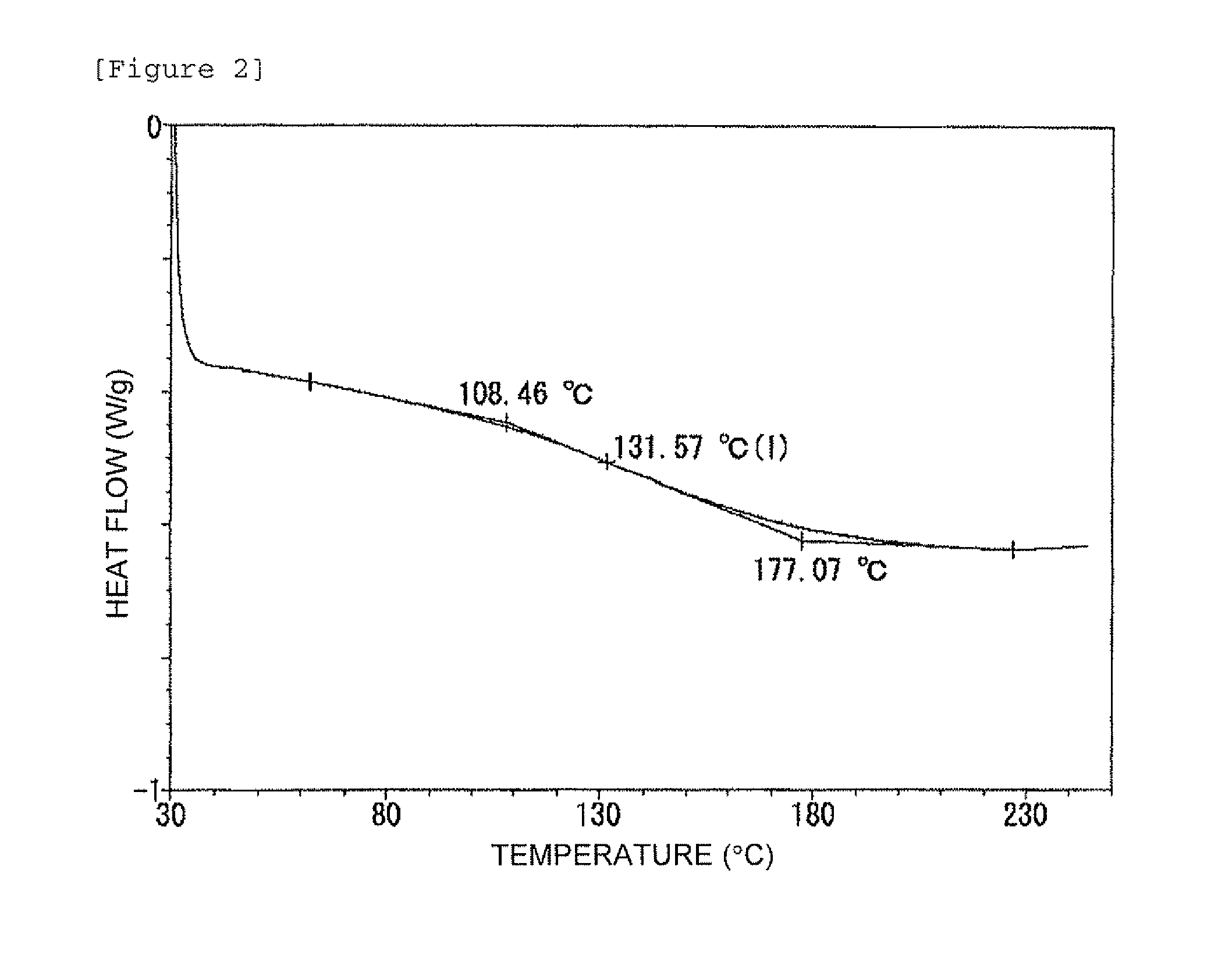Composition for formation of cured epoxy resin, and cured products thereof
a technology cured products, which is applied in the field of compounding for the formation of cured epoxy resin, can solve the problems of insufficient hardness of clathrate and extremely poor stability of one pack, and achieve the effects of enhancing one pot life, reducing curing reaction, and effectively cured resin
- Summary
- Abstract
- Description
- Claims
- Application Information
AI Technical Summary
Benefits of technology
Problems solved by technology
Method used
Image
Examples
reference example 1
Synthesis of NIPA-2P4 MHZ Clathrate
[0089]80.6 mmol (15.16 g) of 2P4 MHZ was added under stirring to a solution obtained by placing 40.3 mmol (8.5 g) of 5-nitroisophthalic acid (NIPA) and 121 ml of methanol into a flask and mixing them, and the resulting solution was heated to reflux for 3 hours. Thereafter, the solution was left to stand at room temperature overnight, and then filtered and dried under vacuum to give 23.26 g (98.3% yield) of (NIPA: 2P4 MHZ=1:2).
reference example 2
Synthesis of HIPA-2P4 MHZ Clathrate
[0090]109.8 mmol (20.67 g) of 2P4 MHZ was added over 15 minutes under stirring to a solution obtained by placing 109.8 mmol (20 g) of 5-hydroxyisophthalic acid (HIPA) and 250 ml of methanol into a flack and mixing them. After being left to stand for 2 hours, the resulting solution was heated to reflux for 3 hours. Thereafter, the solution was left to stand at room temperature overnight, and then filtered and dried under vacuum to give 39.56 g (97.3% yield) of (HIPA: 2P4 MHZ=1:1).
example 1
[0092]0.451 g of 1,1,2,2-tetrakis(4-hydroxyphenyl)ethane (TEP) was further mixed with 5 g of an epoxy resin (Epotohto YD-128 produced by Tohto Kasei Co., Ltd., epoxy equivalent: 184 to 194 g / eq) and 0.31202 g of the clathrate crystal NIPA-2P4 MHZ obtained in Reference Example 1, and the temperature thereof was raised to 175° C. by using a differential scanning calorimeter (DSC) (manufactured by TA Instruments) and this temperature was maintained for 60 minutes to allow the composition to be cured. Then, the temperature was returned to 30° C. and raised again, and thereby the glass transition point of the cured product was measured. FIG. 1 shows a thermal analysis (DSC) chart based on changes in temperature of the resin composition. The glass transition point of the resin composition was 160.57° C.
PUM
| Property | Measurement | Unit |
|---|---|---|
| Substance count | aaaaa | aaaaa |
| Substance count | aaaaa | aaaaa |
| Time | aaaaa | aaaaa |
Abstract
Description
Claims
Application Information
 Login to View More
Login to View More - R&D
- Intellectual Property
- Life Sciences
- Materials
- Tech Scout
- Unparalleled Data Quality
- Higher Quality Content
- 60% Fewer Hallucinations
Browse by: Latest US Patents, China's latest patents, Technical Efficacy Thesaurus, Application Domain, Technology Topic, Popular Technical Reports.
© 2025 PatSnap. All rights reserved.Legal|Privacy policy|Modern Slavery Act Transparency Statement|Sitemap|About US| Contact US: help@patsnap.com



